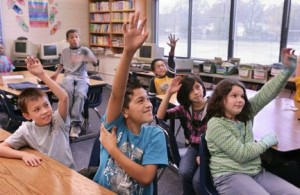By Monica Rhor
Latino Ed Beat
Classrooms across the country are growing more diverse, and teachers across the country are facing the challenge of meeting the needs of an increasingly diverse student population.

And each of these classrooms contains the seeds of stories examining the effects of changing student demographics.
How are teachers changing their curriculum, teaching materials and teaching methods to adapt to a more diverse population? How are schools and school districts training teachers, administrators and counselors so that they are more sensitive to a multicultural community? Where are schools falling short in meeting these needs?
This Huffington Post column, a gathering sponsored by Education Week Teacher, and the Teaching Tolerance initiative by the Southern Poverty Law Center focus on the trend and how some teachers have molded their classrooms to embrace the diversity of students — an important step toward bridging the achievement gap.
As Maureen Costello, the director of the Teaching Tolerance project, points out in the HuffPo column:
“As a nation, we’ve been staring at the achievement gap for more than a decade. Education reform efforts have focused on a host of ways to close this gap: charter schools, testing, teacher preparation, the length of the school day, data-driven assessment and so on. Researchers and educators recognize that you need to know your students to teach them – the cornerstone of culturally relevant teaching.”
This Education Week site collects information about the Teaching Tolerance project and teachers honored for their work. It’s a great jumping-off point for education reporters looking for story ideas about classroom diversity. Among the resources are panel discussions about culturally responsive teaching and background on teaching English Language Learners.
The best way to cover these issues is to spend time in classrooms coping with changing demographics and talk to teachers, parents, and students affected. What does a culturally diverse classroom look like, feel like, sound like? How does an English-speaking teacher effectively work with students whose native language is Spanish or Vietnamese? How does the school culture change when there is a demographic shift?
And what happens to students who are being taught by teachers who are not equipped to deal with the changes?




